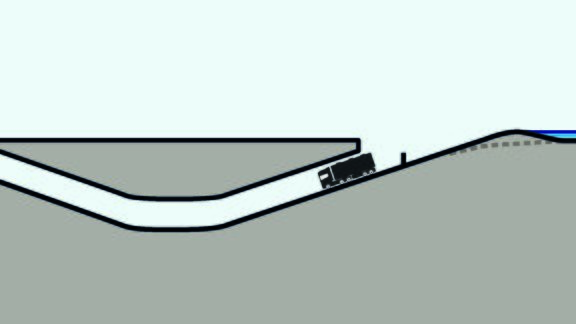Protect or close off tunnels/passageways
Tunnels and passageways can be crucial in terms of leaving a site or an area, or providing access for emergency services.
- Applicable to sites, infrastructure and equipment;
- Crisis management;
- Permanent and temporary measure;
- Substantial investment;
- Prevents economic damage;
- Applicable at flood depth starting at approx. 50 cm.

Raising the entrances to tunnels and passageways or sealing them off with partitions can prevent flooding, keep the tunnels and passageways accessible, and allows you to use them again sooner.
You can protect crucial tunnels or passageways by raising the entrance, or installing doors or watertight partitions. You can also install pumps to pump out water faster after a flood.
Protect tunnel/passageway by raising the entrance
Raising an entrance to a tunnel by creating a permanent gentle slope keeps out the water and prevents flooding. This is a tried and tested method that is already used in motorway tunnels. The slopes in entrances to motorway tunnels are so slight that they can hardly be seen. This approach prevents the flooding of the tunnel/passageway while maintaining access to the area behind. It requires a substantial investment but it can also have a major impact.
Closing off a tunnel/passageway with partitions
Tunnels and passageways can also be closed off with watertight partitions or flood doors if there is a flood threat. That will keep water out. The tunnel or passageway will be out of use temporarily but it can be used again quickly after the water subsides, particularly if the water is also pumped out quickly.
Back to the overview.
You can take these measures to improve your flood protection. The focus here is on generic descriptions of the measures in question. If you have questions about applying the measures on your site, please contact the Flood Risk Management Team.
No rights can be derived from the measures. See also the disclaimer.